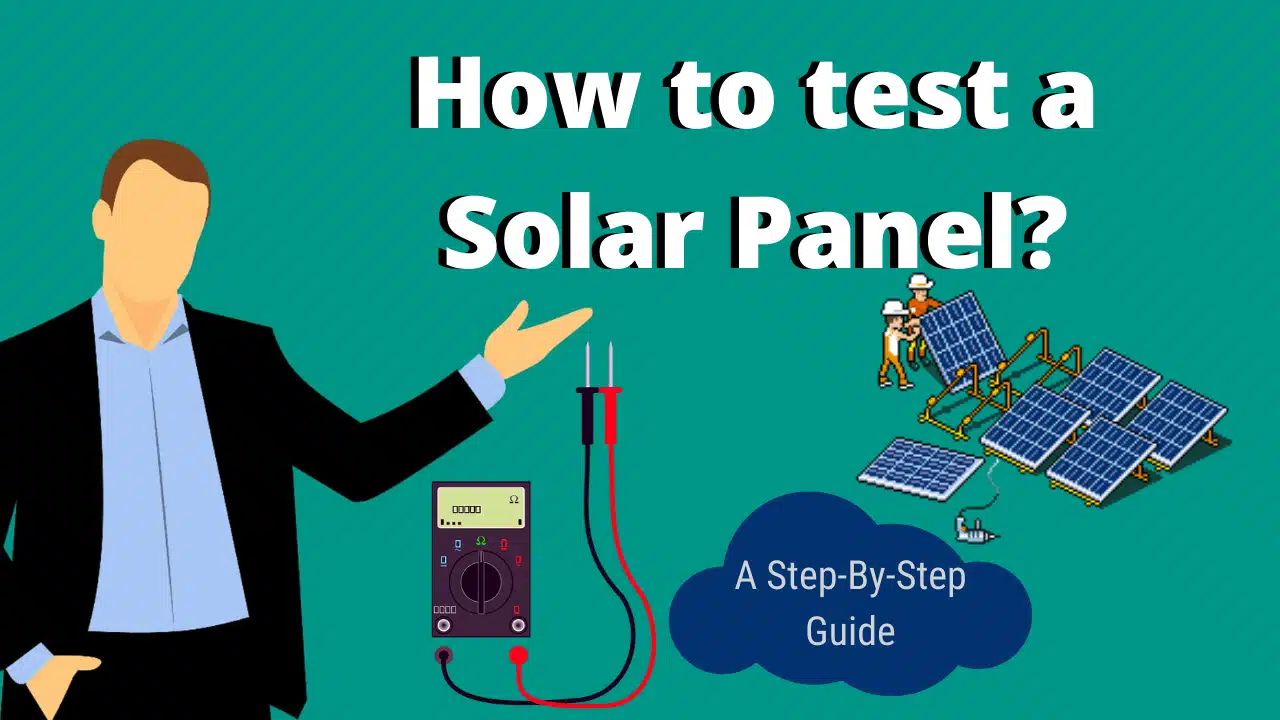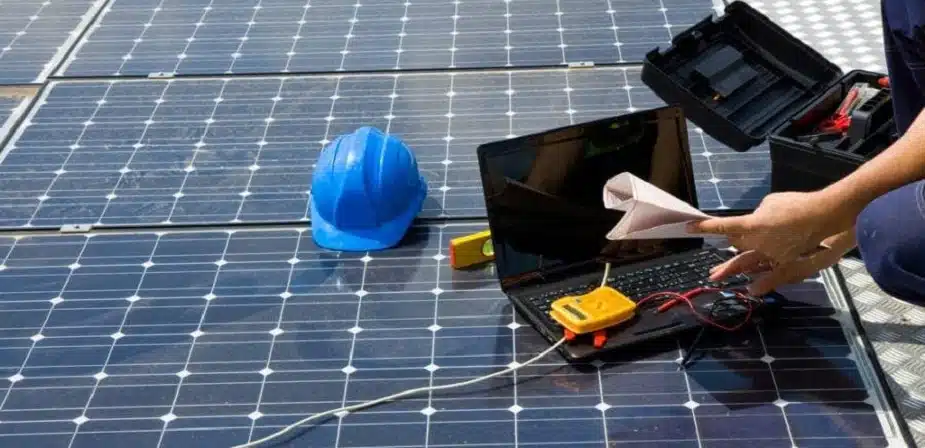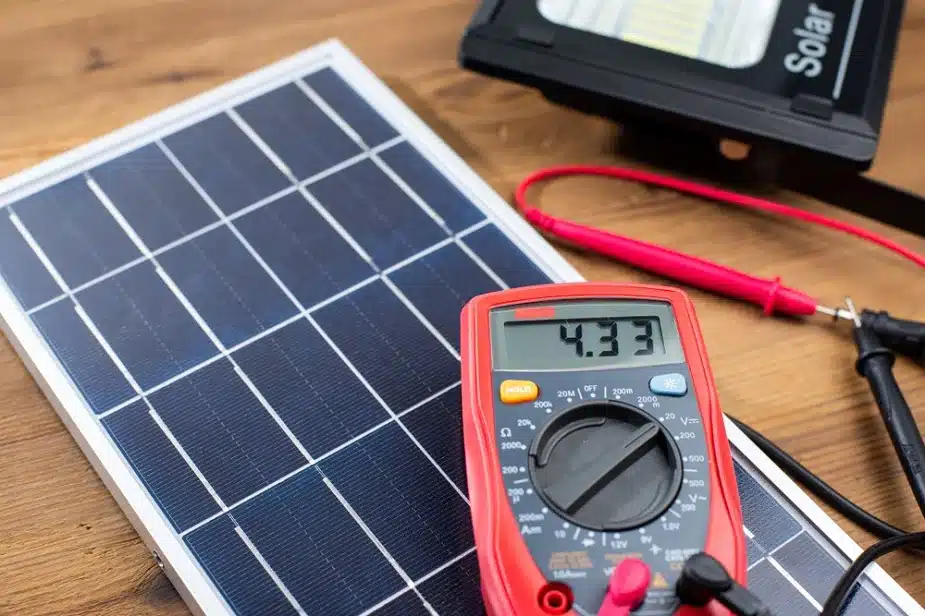The Importance of Test Solar Panel
Testing your solar panels is not only a verification of their performance, but also ensures you are getting the most out of this green energy technology. First, this process allows you to accurately understand the actual output of your solar panels, as the system’s efficiency is affected by factors such as weather, roof pitch, and other environmental factors. sungold As a solar panel manufacturer, the actual factory-set maximum capacity parameter data of the solar panel will be provided, but in reality, your panel may not reach this maximum value for various reasons.

Understanding the true performance of your panels can help you estimate your monthly energy savings while identifying any issues that may arise during installation. Additionally, by performing regular tests, you can detect drops in energy production, which are often a precursor to component damage or system failure. Early diagnosis can not only avoid larger repair costs, but may even save money on replacement parts.
How to tell if a solar panel is working
A multimeter is generally used to test solar panels. It can accurately measure current, resistance and voltage.
Choose a multimeter
Multimeters are divided into two types: analog and digital. Analog multimeters are more economical and durable, but their old-fashioned scales and pointers can make results difficult to read. In comparison, digital multimeters, while more expensive, offer greater accuracy and ease of readability. Regardless of type, it is suitable for testing solar panels.

4 Steps to Test Solar Panel with a Multimeter
Here’s how to test solar panels with a multimeter.
1. Follow safety precautions
Always make sure to wear insulated gloves before you begin. Check your multimeter for broken wires and only use the machine when it is completely dry.
Never connect the tips of two probes as this may cause a short circuit!
2. Measure the voltage
To measure voltage, turn on the device and set the selector knob on the multimeter to DC voltage.
After that, place the black probe on the negative terminal of the solar panel. Meanwhile, connect the red probe to the positive terminal.
Remember, the black probe is always plugged into the COM socket. The red probe, on the other hand, fits into the V/Ω/Hz slot.
Next, place the solar panel in the sun and face it south for best results. Once you get the reading, compare it to the voltage (Voc) on the back of the panel.
If these values are close, your solar panels are in good condition. However, if they don’t match, your panel is dirty or damaged. It could also be a wiring issue.
3. Pay attention to resistance
Resistance is an indicator of resistance to the flow of electrical current.
To do this, turn the knob to the Ohms or Ω setting. Once setup is complete, connect the probe to the resistor lead and check the reading.
Avoid holding both leads as your skin can affect the results.
If the ohms value is between 0 and 1, your solar panel is working well. A measurement of 1 and above means your solar panel’s wires are damaged!
4. Check the current
Current is the amount of electricity flowing through a circuit. Measuring this is critical to understanding whether there are parasitic drains on the battery.
Parasitic traction is an electrical component that consumes power even when the solar panels are turned off. It may cause low voltage or a dead battery.
To check the current, turn the selector knob to the amplifier setting. Connect the multimeter’s probe to the battery cable and note the value while the panel is exposed to sunlight.
Finally, compare the reading with the Isc value on the back of the solar panel. If the reading is far from the specification, it indicates a short circuit.
Signs of test solar panel
Here are a few signs that your solar panels need to be tested:
How to test solar panel output
Assume that solar panels generate an average of 200 to 400 watts per hour.
Test values below this range may indicate a problem with the system. After calculating using the formula “Watts = Volts × Amperes” you can further measure watts using a solar charge controller, some devices can even be connected to your phone for monitoring.
How to measure watts using a solar charge controller
Solar charge controllers connect solar panels and batteries to not only measure watts but also extend battery life. By connecting the wires and tightening them, and then connecting the battery correctly according to the positive and negative polarity, the controller will display the battery capacity, allowing you to observe the wattage.

Tips for test solar panel
When testing, make sure the solar panel is clean, unobstructed, and facing the sun. If the weather is bad, please choose sunny weather to retest. It is equally important to check the inverter, MC4 connector, and battery to ensure that the overall system is functioning well.
Here are other parts to consider.
1. Inverter
The inverter is one part of your setup that you should always pay attention to. It requires regular maintenance and will only last five to seven years. This is because inverters are prone to voltage spikes and overheating.
Be sure to check if the inverter has a green light. An orange or red light indicates a damaged or shorted capacitor.
For the latter, you can try restarting your device. If it won’t restart, you need to call a professional.
2. MC4 connector
Over time, your MC4 connectors may become stiff or lose conductivity and may need to be replaced. It can cause uneven charge flow, which can lead to overheating.
Additionally, if the MC4 is not locked properly, it may increase inlet humidity and trip the inverter.
To avoid these situations, you should test the MC4 for contact resistance, insulation resistance, and lockout.
3. Battery
Like panels, battery life can be affected by weather extremes.
Its state of charge is an indicator of its condition, as it affects how much energy the battery can hold. For this reason, you should monitor it.
Test Solar Panel FAQs
1. What are the signs that my solar panels need maintenance?
If your electric bill or SEG payment skyrockets, it’s a sign that your solar panels need maintenance.
Additionally, even if there are no obvious problems, it’s a good idea to test your solar panels once a year. Doing this ensures your power generation is at optimal levels.
2. I discovered something was wrong with my solar panels. what should I do?
If you encounter a problem, you should contact the installer immediately for inspection.
You can also ask a professional to perform preventive maintenance so you don’t have to perform tests. Inspectors can identify issues with your PV system, replace faulty panels, and repair your solar inverter!
3. What factors affect the output of solar panels?
When you test your solar panels, there are several factors that can affect the readings. Weather, tilt, and panel orientation can reduce system productivity.
High Temperature: In 25-degree weather, the system may lose approximately 10% of its rated power, and the loss will be greater if the weather is hotter. A cool breeze will increase efficiency.
Solar panel orientation and tilt: Panels facing due north will generally produce more energy (over the course of the day) than panels facing east or west, and they should be tilted optimally.
System losses: During the conversion from DC to AC, the cable loses about 2% of the power, while the inverter loses 3-4% of the power.
Clouds and Haze: Yields decrease with reduced solar radiation.
Dirt and Shade: Sap, bird droppings, shade, dust and dirt can reduce yields.
Seasons: It goes without saying that yields will be higher in the summer, with more hours of available sunlight, and less in the winter.
Time of day: This has an impact when you measure solar energy (the kilowatt output of your system). Noon is usually the highest time.
4. Where can I get information about solar panel performance?
The best thing about having a reliable installer is that they can provide you with easy-to-understand data. This data tells you how well your solar panels are performing.
In conclusion
All in all, it’s crucial to know how to test solar panel to ensure they are in working order. This will help you avoid costly losses and save you money in the long run. Knowing how to test solar panels is critical to maintaining the long-term performance of your system. By using tools such as multimeters, you can effectively monitor and maintain your solar system to ensure it operates efficiently, avoid unnecessary losses, and maximize return on investment. If you encounter any problems, it is key to promptly contact a professional installer for inspection and repair.











